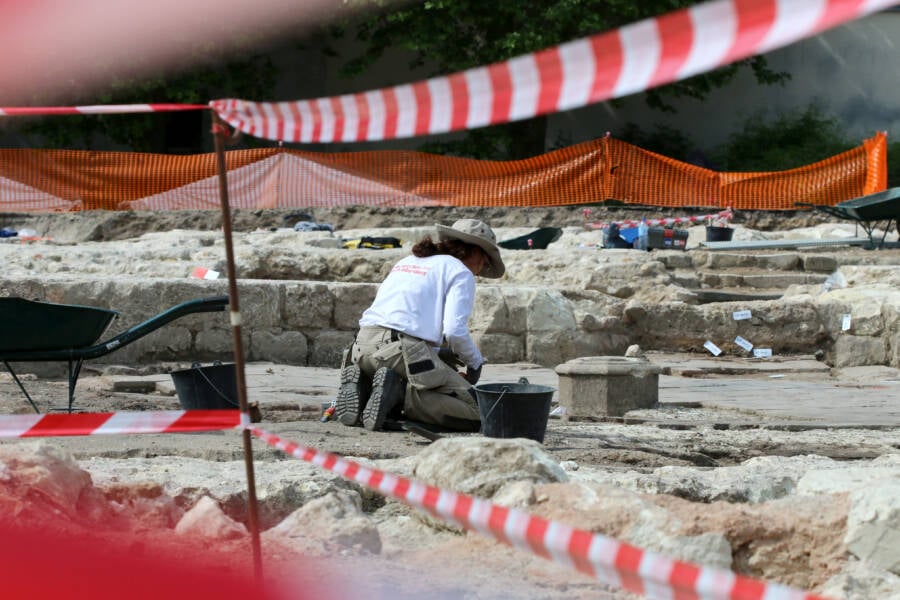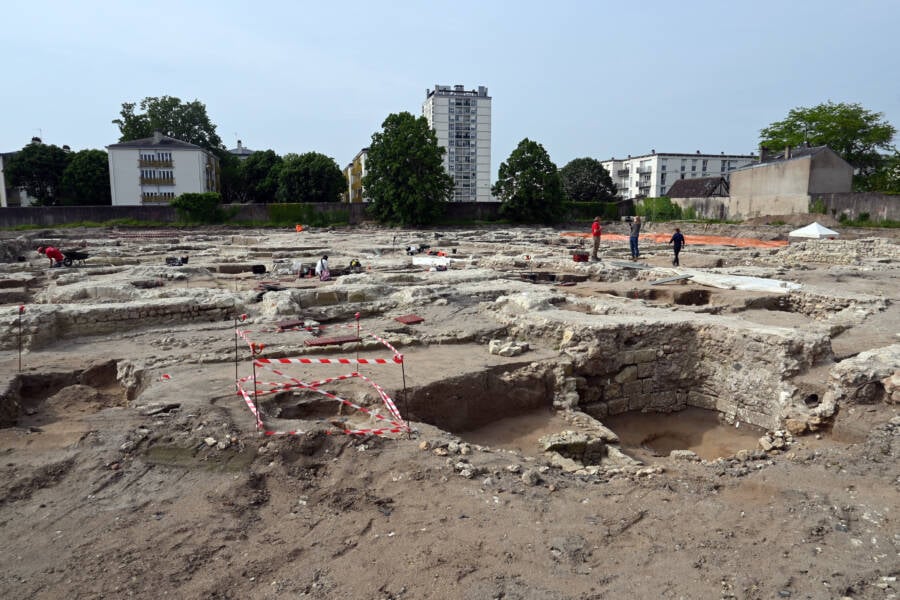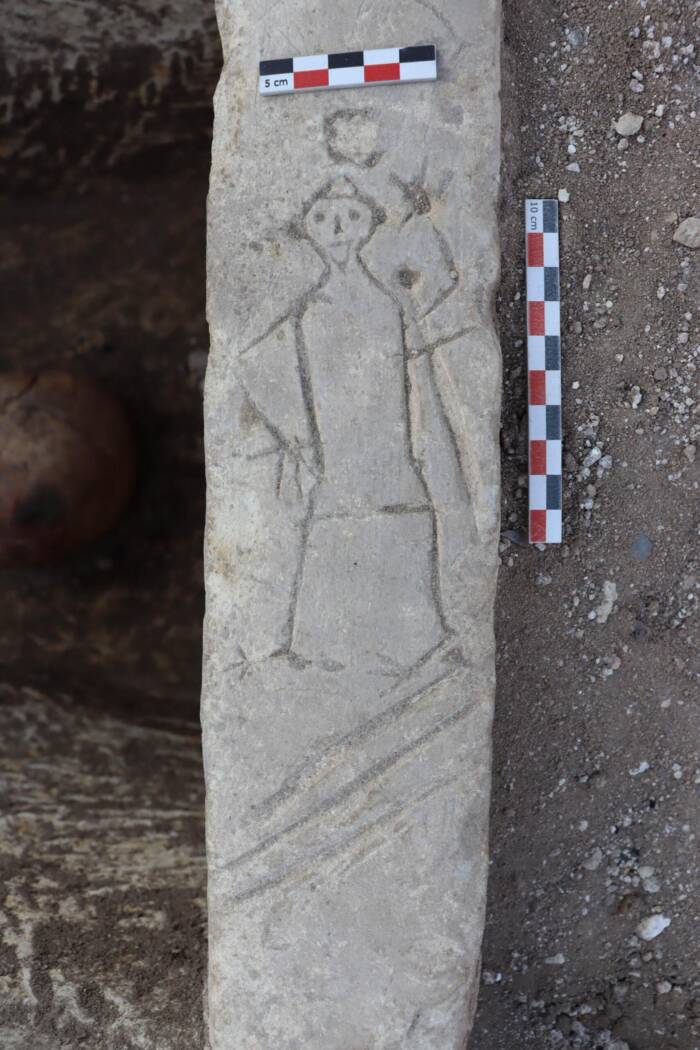Beaumont Abbey was in operation for more than 800 years before the government seized its lands and expelled its nuns during the French Revolution.

Philippe Blanchard/INRAPArchaeologists excavating Beaumont Abbey in Tours, France.
The fascinating, surprising 800-year history of a French abbey is steadily being revealed thanks to a “unique” excavation project.
The abbey in question is Beaumont Abbey in Tours, France, where archaeologists have uncovered more than 1,000 burials, including the bodies of plague victims — and the remains of an entire village dating back to the 9th century.
“This is the first time in Europe that the entire space of an abbey, including the gardens, has been excavated in one go,” said Philippe Blanchard of the National Institute for Preventive Archaeological Research (INRAP) in a translated statement.
The excavation was a 14-month endeavor that ended in December 2023, and researchers are now examining everything they unearthed, painting a clearer history of life at Beaumont Abbey.
Archaeological Discoveries Shed Light On Life At Beaumont Abbey
During the Beaumont Abbey excavations, researchers unearthed the entire convent, including the church, the cloister, peripheral buildings, facilities, abbey dwellings, the refectory, the kitchen, the sinks, the parlor, cellars, a wash house, latrines, and more.
These finds span the abbey’s entire history, from its foundation in 1002 up until the French Revolution, when the convent shuttered its doors.

Mathilde Noël/INRAPAn overview of the Beaumont Abbey excavation site.
“It is a site that has experienced 800 years of evolution,” Blanchard said. Over the course of its lifetime, the abbey was constantly expanded upon and overhauled. Researchers identified “four to five” floors, sometimes tiled.
“[The rooms] are constantly changing,” Blanchard said. “This may come as a surprise, but it follows the same logic as our houses where we redo the kitchen every 20 years, except that it lasted eight centuries.”

A. Raymond/SadilA portion of tile recovered from the Beaumont Abbey site.
Blanchard said the abbey hosted two types of nuns, choir sisters and lay sisters, describing the choir sisters as “the noblest” while the lay sisters were “of more humble origin.”
Choir sisters came from noble families or the local bourgeoisie and were responsible for running the abbey. They also received the benefit of education at the convent, whereas lay sisters were there strictly to work.

Jean Demerliac/INRAPResearchers excavating the servants’ cemetery.
During the 16th century, roughly 60 nuns lived at the abbey, though it’s unclear if that refers to all nuns or simply the choir nuns. By the time of the revolution in 1790, that number had dropped to around 46.
But given that there were more than 1,000 bodies buried in the abbey’s cemeteries, it’s safe to say the site played host to a great number of people over the centuries.
Bodies And An Ancient Town Buried Beneath The Earth
According to Blanchard, the team “carefully excavated 890 burials and 150 others were excavated more quickly,” meaning they recovered at least 1,040 bodies.

Jean Demerliac/INRAPBurials unearthed at Beaumont Abbey.
They have yet to determine the sexes of the skeletons or their origins, but Blanchard said further studies could reveal more information.
“One of the post-excavation objectives will be to obtain a sampling of these different populations and to compare them, in particular through isotopic studies which will make it possible to better determine their origins (whether these populations come from far away or if they are local) and to better understand their health status,” he said.

Jean Demerliac/INRAPAn ancient cooler unearthed at Beaumont Abbey.
Based on the presence of various tombs, however, it is safe to assume that at least some priests were buried in the cemetery along with the nuns.
Analysis of various ceramic fragments unearthed in dumps at the site could also help to confirm the social status of those buried in the cemetery. From what researchers have gathered so far, there seemed to have been different sections of the cemetery dedicated to those of different social ranks.

Philippe Blanchard/INRAPGraffiti on a sarcophagus.
“In the cemetery of the poor, we also noted certain pathologies: in particular a hand in which all the phalanges were fused, indicating osteoarthritis, or even a major infirmity because the entire arm was taken and all the metatarsals and tarsi fused,” Blanchard said. “We also observed very pronounced scoliosis, as well as intrauterine fibroids which are frequently observed in nuns.”
This massive cemetery once belonged to the village of Belmons, which gave Beaumont Abbey its name. The village was first mentioned in texts in 845 C.E., meaning it existed as early as the 9th century. However, the history of Belmons was not the focus of the excavation, so little other information has been revealed about its fate.
What is clear, though, is what happened to the abbey in its final days. In 1789, during the French Revolution, the government seized the abbey and its lands and expelled its last nuns. Eventually, in the early 19th century, the church and its associated buildings were torn down, officially bringing an end to the centuries-long history of Beaumont Abbey.
After reading about the excavation at Beaumont Abbey, learn more about the French Revolution — including the origins behind the phrase “Let them eat cake.” Then, read about Charles-Henri Sanson, the royal executioner of 18th-century France.





